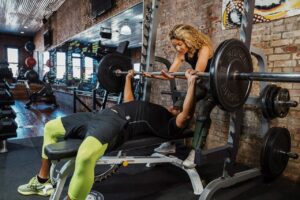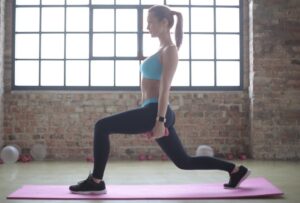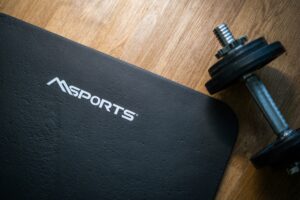It’s safe to say that most people are interested in building a round and firm butt. Aside from looking great, it makes you more athletic and contributes to various activities, including squatting, jumping, running, etc.
But as you’ve probably realized, there is more to training the glutes than meets the eye. Several muscles make up the area, each playing a crucial role in how the butt looks and functions.
To that end, we’ve dedicated today’s article to the underbutt––an overlooked area affecting how round your butt can get. Read on to learn what the area is, how to target it, and the best lower glute exercises.
What is the ‘Lower Butt’?
The lower butt, commonly known as the underbutt, is where the glute muscles meet the hamstrings, creating the desired crease. Building the glutes will generally result in a more pronounced crease, but doing so is easier said than done.
One helpful tactic for improving muscle activation and hopefully experiencing better growth is to leverage the mind-muscle connection. Regardless of what exercise you’re doing, actively imagine that you’re activating the lower butt area on every repetition.
Genetics also play a role in your ability to develop the underbutt because they influence muscle insertions and body fat distribution.
Of course, that should never be an excuse to give up. So let’s dive into the glute anatomy to learn about the muscles we want to develop. After that, we’ll go over 12 excellent lower glute exercises.
Anatomy of The Glute Muscles
‘The glutes’ is an area consisting of three muscles:
- Gluteus maximus
- Gluteus medius
- Gluteus minimus
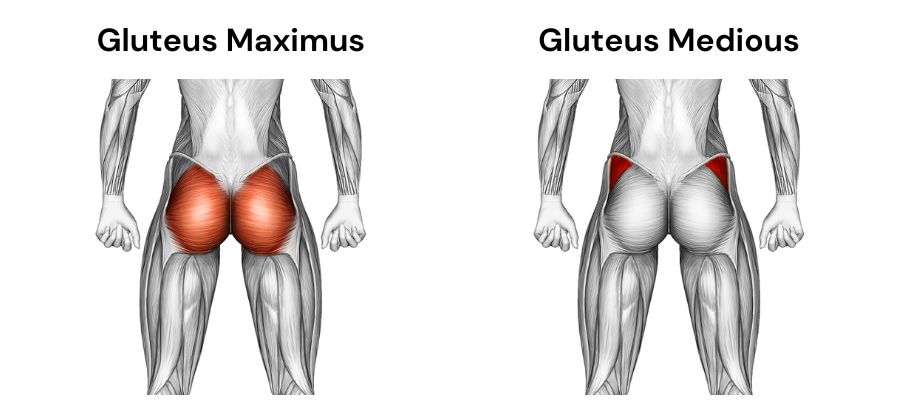
Of these, the glute maximus is the largest and most powerful (1). It makes up the bulk of the buttocks, and developing it offers several benefits. The glute max is the largest muscle in the entire body, and its primary function is to produce hip extension with the help of the hamstrings (1).
The glute medius is a smaller muscle situated above the glute max. It is located on the outer side of the butt, and growing it makes the area appear rounder when seen from the back (2). The muscle is also necessary for the shelf butt, which you can read about here.
Your glute medius is primarily responsible for hip abduction, such as raising your leg laterally (2).
Finally, we have the gluteus minimus, the smallest of the three muscles. It lies underneath the glute medius and assists with hip abduction and stability (3).
Developing all three muscles is necessary for building a round and strong behind, but you should emphasize the gluteus maximus for the underbutt.
Related article: Top 15 Gluteus Minimus Activation Exercises
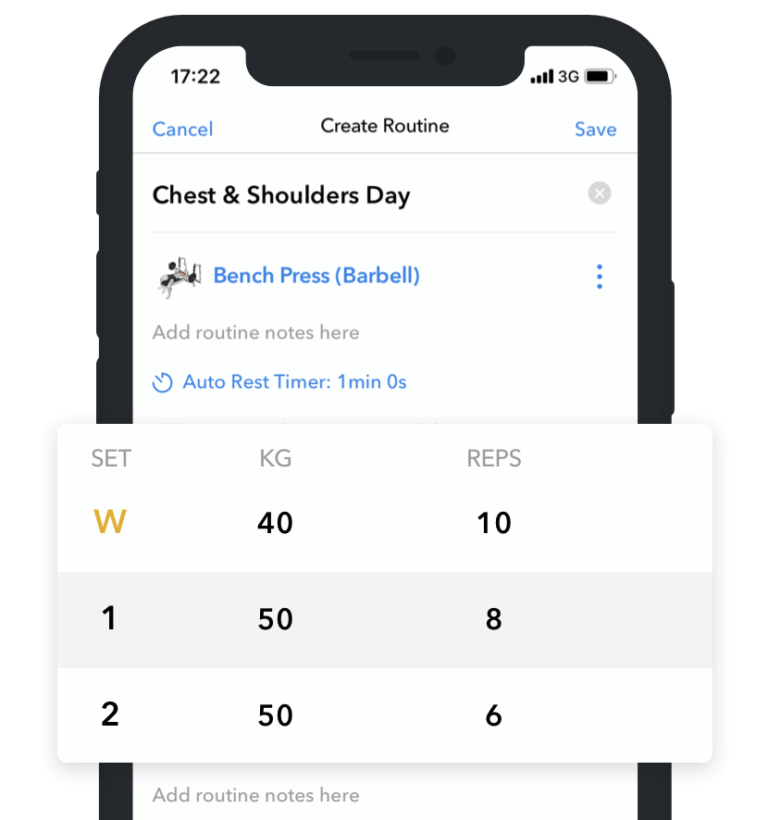
Hevy – Workout Tracker







Hevy – Workout Tracker
Create and log your lower glute exercises with Hevy, and track your progress
12 Lower Glute Exercises For a Head-Turning Behind
1. Hip Thrust (Barbell)
Barbell hip thrusts are one of the most popular glute-building exercises today (4). The movement grew in popularity in the last few years, and people enjoy doing it because it is relatively easy to learn and set up.
Unlike many glute exercises, hip thrusts allow you to overload your posterior chain with more weight and cause greater mechanical tension, which is beneficial for hypertrophy (5). As a result, it’s not uncommon for trainees to work up to 300, 400, or even 500+ lbs.
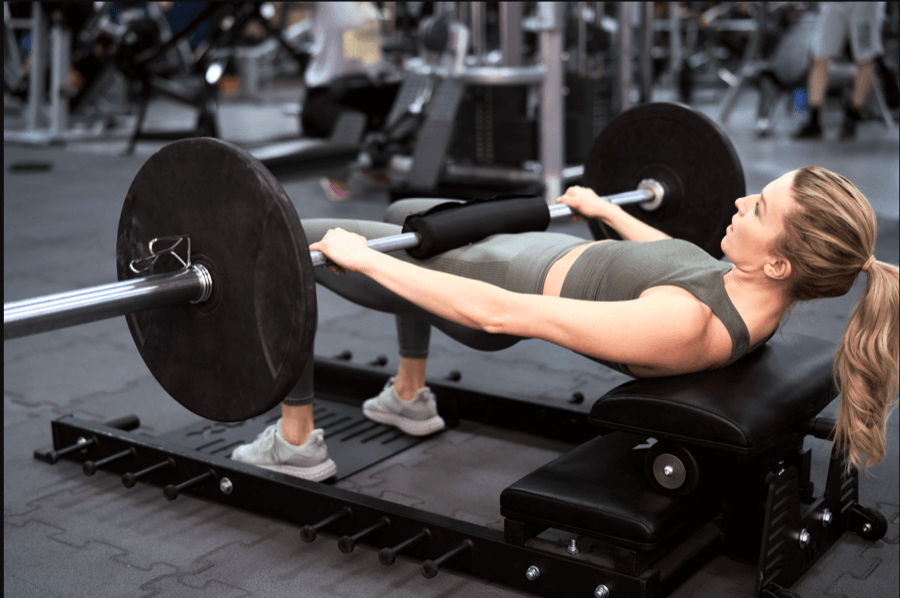

How to:
- Sit on the floor with a flat gym bench behind your back and a loaded barbell over your hips.
- Position your upper back against the edge of the flat gym bench and ensure it is stable and can support your body without sliding away.
- Bend your knees and plant your feet flat on the floor. At the same time, position the crease of your hips against the barbell. Equip the bar with a pad to make the exercise more comfortable and prevent bruising.
- Retract your shoulder blades, engage your abs, and take a deep breath.
- Press through your heels and squeeze your glutes to drive your hips toward the ceiling.
- Move up until your hips are in line with your shoulders and knees. Your knees should be at a 90-degree angle and directly over your ankles.
- Pause at the top for a moment and slowly lower your buttocks to the floor, exhaling near the bottom.
- Inhale again and repeat.
Pro tip:
Hip thrusts are one of the best under-booty exercises, but don’t use too much weight right from the start. Instead, pick a weight that allows you to do at least 12 slow and controlled repetitions.
Doing so will make it easier to engage your glutes effectively and develop a mind-muscle connection with the lower buttocks region.
2. Dumbbell Step Up
People generally see the step-up as a quadricep-dominant exercise because the movement features knee flexion. Specifically, you must stand before an elevated object and flex your quadriceps to bring yourself on top.
But, despite the decent quad activation, step-ups appear to be even more beneficial for the gluteus maximus. When done correctly, the movement can make for an excellent underbutt workout.
In one review paper from 2020, researchers looked at existing data to determine gluteus maximus activation across common strength training exercises, including step-ups and variations, hip thrusts, lunges, and more (6).
Interestingly, the step-up elicited the highest glute max activation, even more than hip thrusts. Here’s a direct quote from the authors:
“The step-up and its variations may elicit the highest level of Gmax activation possibly to the stabilization requirement of the exercise.”
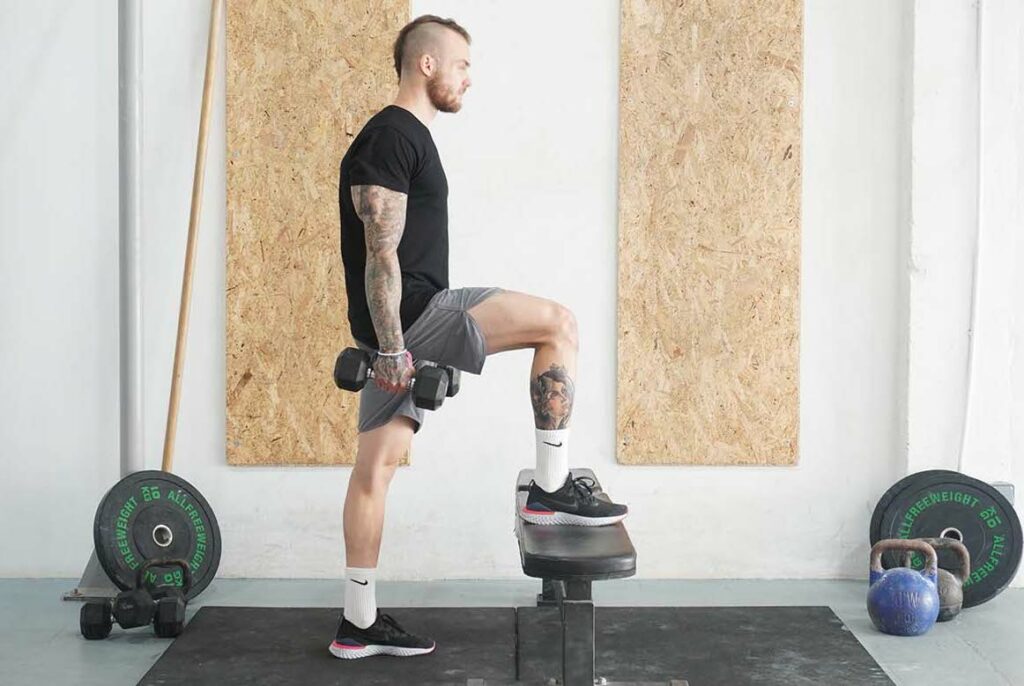

How to:
- Grab a pair of dumbbells and stand in front of an elevated object: gym bench, plyo box, etc.
- Have your feet shoulder-width apart with your toes pointing slightly out. Keep your arms to your sides.
- Retract your shoulder blades, engage your abs, and take a deep breath.
- Raise your right leg, place your foot on the elevated object, and flex your quadriceps to straighten your leg, bringing yourself on top of the gym bench or plyo box.
- Step off carefully as you exhale.
- Take another breath and raise your left leg in the same way.
- Keep alternating between left and right until you’re done.
Pro tip:
You can shift the emphasis to the hamstrings and glutes by performing the exercise with a taller object. Raising your front foot higher makes the exercise more challenging and forces the posterior chain to contribute more.
You can use a plyometric box because these come in various sizes and allow you to adjust the height to the desired level.
3. Cable Pull Through
Cable pull throughs are among the best underbutt exercises. The hip hinge is similar to a deadlift and trains your entire posterior chain: calves, hamstrings, glutes, and back.
One notable benefit of the movement is that cables provide constant tension and aren’t influenced by gravity. Each repetition is challenging from start to finish, and your muscles never get any time to rest.
Constant tension can lead to better muscle activation and make it easier to form a mind-muscle connection with your underbutt. As a result, you might be able to direct more growth to that area and develop a round butt.
Another benefit of the movement is that you can overload your posterior chain with a lot of weight and cause significant mechanical tension necessary for hypertrophy and strength gains.
Plus, the range of motion is excellent. Leaning forward stretches your posterior chain significantly, and extending your hips causes a strong muscle contraction.
How to:
- Select the appropriate weight, set the pulley to the lowest position, and attach a rope.
- Face away from the cable pulley and have the attachment between your feet.
- Bend over and grab both ends of the rope attachment with an even neutral grip (palms facing one another).
- Stand tall with your hands together and rope between your legs.
- Take a couple of steps forward to clear enough room for the exercise, and have your feet shoulder-width apart.
- Retract your shoulder blades, take a deep breath, and engage your abs.
- Push your buttocks back and lean your torso forward while keeping your back straight.
- Lean forward until your torso is roughly parallel to the floor. You should feel a significant stretch in your posterior muscles.
- Drive your hips forward to stand up and squeeze your glutes at the top position as you exhale.
Pro tip:
Actively engage your buttocks muscles on every repetition. Feel the muscles stretch as you lean forward and contract them hard as you stand up. Reduce the weight if you’re struggling with muscle activation. Do sets of up to 15 slow and controlled repetitions.
4. Lying Leg Curl (Machine)
Lying leg curls are traditionally a hamstring exercise. One of the hamstring functions is knee flexion, which occurs during leg curls (7).
But in addition to developing the hamstrings, the leg curl can be among the more effective lower butt exercises. Specifically, the exercise targets the area where the hamstrings and glutes meet, also known as the underbutt.
How to:
- Select the appropriate load on the machine.
- Adjust the pad to be against your Achilles heel as you lie down.
- Set yourself up on the machine, grab the handles for support, and position the back of your lower legs against the pad.
- Engage your abs, take a deep breath, and flex your knees until you feel a strong contraction in your posterior muscles.
- Pause at the top position for a moment and slowly extend your legs as you exhale.
- Inhale again and repeat.
Pro tip:
If you struggle to feel your glutes when doing leg curls on a machine, consider another version of the exercise that doesn’t get as much attention.
Specifically, you should lie face down on a flat gym bench with your hips on the edge and your knees on the floor. Grab the bench with both hands for support and squeeze your glutes to lift your legs and align your knees and hips.
Once in position, maintain glute tension while flexing and extending your knees. Doing so can be a good hamstring workout and improve your mind-muscle connection with the glutes.
5. Glute Kickback on the Floor
Glute kickbacks on the floor are a simple, beginner-friendly, and equipment-free movement you can do at home to develop the underbutt.
The exercise is simple to learn, its range of motion is fantastic, and you can use ankle weights for additional resistance.
You can also do the exercise as part of a lower butt workout at the gym. For instance, do these during your warm-up to improve glute activation, or leave them for the end. After doing your main work for the day, you can do a few high-rep sets to finish off your glutes.
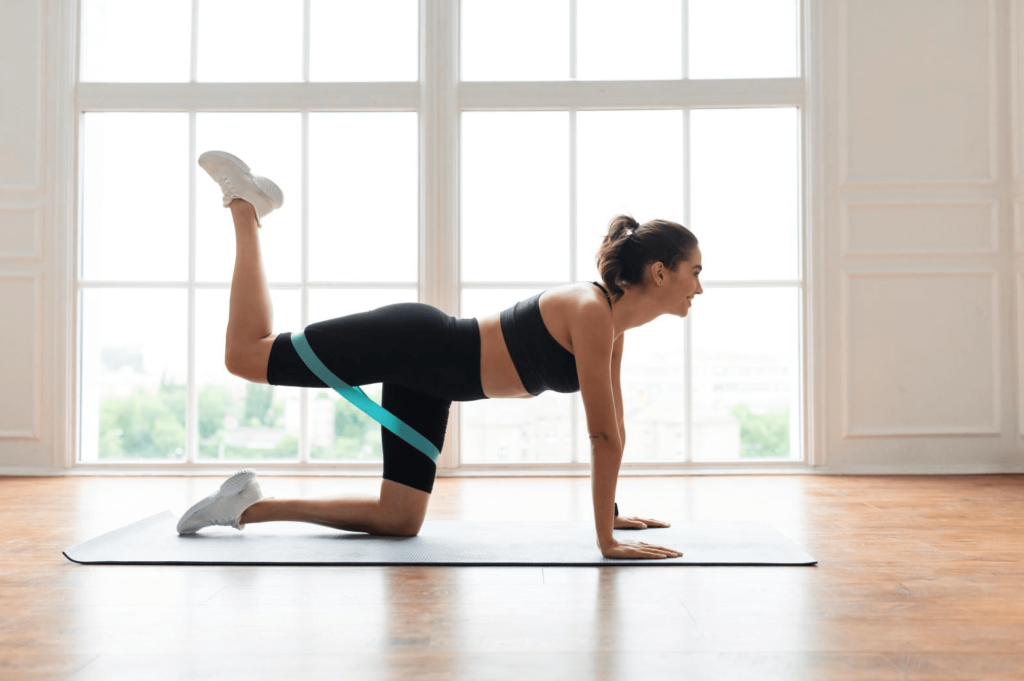

How to:
- Lay an exercise mat on the floor and get down on all fours. Keep your arms straight, your hands flat on the floor, and your knees bent at a 90-degree angle. Your hips should be directly over your knees.
- Retract your shoulder blades, take a deep breath into your belly, and tense your midsection.
- Shift your weight slightly to the left and raise your right knee an inch from the floor.
- Inhale again and kick your right leg back in one fluid motion, slowly extending the knee near the top of the repetition. Your ankle, knee, hip, and torso should form a straight line.
- Slowly bend your knee, bringing the leg to the starting position as you exhale.
- Inhale again and repeat.
- Once finished, shift to your right and do the same number of reps for your left side.
Pro tip:
The primary way to perform the exercise is by extending your leg as you kick back. But if doing so prevents you from feeling your glutes as effectively, keep your knee bent.
One option is to squeeze a light dumbbell between your calf and the back of your thigh. Doing so would provide extra muscle resistance and lead to better muscle activation.
Experiment to see which version works better, and do your reps slowly and with good control to target the underbutt.
6. Standing Cable Glute Kickback
Standing cable glute kicks are a slightly more advanced exercise than the previous one. Instead of performing them on the floor, you need a cable machine and ankle attachment.
An excellent benefit of the exercise is that you can control the resistance to fit your strength level and gradually overload your muscles to keep growing.
In addition, a cable machine provides constant tension, and your muscles must work hard from start to finish. As a result, you might find it easier to activate the correct muscles.
How to:
- Select the appropriate load, set the pulley to the lowest position, and attach an ankle cuff.
- Wrap the cuff around your right ankle and take a step back to lift the weight off its stack.
- Lean forward by hinging at the hips to maintain a neutral back. Your torso should be close to parallel with the floor.
- Grab the cable machine with both hands for balance, and keep your left foot flat on the floor. Maintain a slight bend in both knees.
- Engage your abs, take a deep breath, and kick back with your right leg in one smooth motion.
- Pause at the top and lower your leg to the starting position as you exhale.
- Inhale again and repeat.
- Once finished, wrap the cuff around your other ankle and do the same number of reps.
Pro tip:
Start with a small weight and do each repetition slowly and with good body control. Once you kick back, hold the position for a moment, squeezing your glute as much as possible.
Many trainees make the mistake of using too much weight and performing repetitions by jerking their legs back. Unfortunately, doing so removes the tension from the glutes, making the movement much less beneficial.
7. Reverse Lunge
Lunges are traditionally a quadricep exercise because knee extension plays a significant role in doing the movement. While that also holds true for the reverse lunge, the variation is slightly different.
First, lunging back instead of forward puts less pressure on your knees, which can be helpful for people who’ve injured that joint in the past.
Second, reverse lunging places greater emphasis on the posterior chain. Specifically, the exercise overloads your hamstrings and glutes in the eccentric portion of each repetition (as you descend).
Another benefit of lunges is that you can train one side at a time, which leads to more balanced development and a lower risk of muscle imbalances. In addition, you can overload your muscles by doing more reps or introducing external weight (pair of dumbbells, a barbell on your back, etc.).
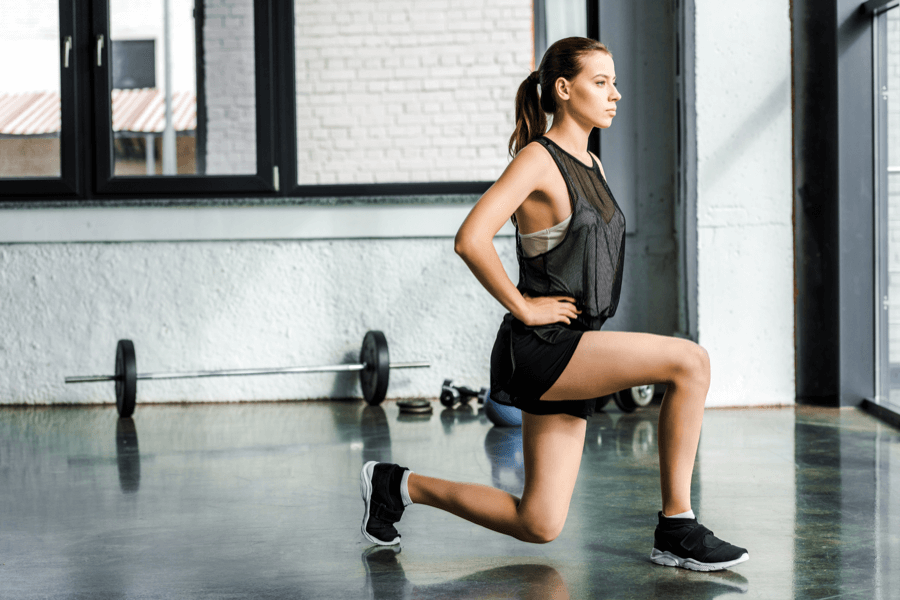

How to (bodyweight):
- Stand tall with your feet shoulder-width apart, toes pointing slightly out, arms bent, and hands on your hips.
- Retract your shoulder blades, direct your gaze a few feet forward, take a deep breath, and tense your midsection.
- Bring your right leg behind your body, planting the ball of your foot on the floor. It will take some experimentation to find your ideal stride length.
- Immediately sink into a controlled lunge by bending your front knee.
- Descend until your back knee is almost in contact with the floor, and pause for a moment. Your front knee should be over your ankle, and your torso should be upright.
- Press through your front heel to straighten your knee and bring your right leg forward as you exhale. At the same time, drive your hips forward and squeeze your glutes at the top.
- Take another breath and lunge again, bringing the right leg back.
- Do as many slow and controlled reps as possible, and perform the same number of repetitions for your left leg.
Pro tip:
You can increase the range of motion by keeping your front foot on a platform. Start with a couple of inches off the ground and work up to 5-7 inches.
Front foot elevation would allow you to sink into a deeper lunge and stretch your posterior chain more effectively. Once you’re comfortable with deep lunges, start using external weight, such as by holding a pair of dumbbells.
Related article: Best Leg Workout and Exercises for a Strong Lower Body
8. Bulgarian Split Squat
Bulgarian split squats are another quadricep-dominant exercise you can tweak to train your posterior chain and build the underbutt.
Specifically, EMG data suggests that a longer stride shifts the emphasis to the glutes and hamstrings (8).
Such a position allows for a more vertical shin position, where the front knee is over the ankle or slightly behind. In addition, a longer stride allows you to stretch your posterior muscles more effectively.
Plus, as with lunges, you work one leg at a time, promoting more balanced development.
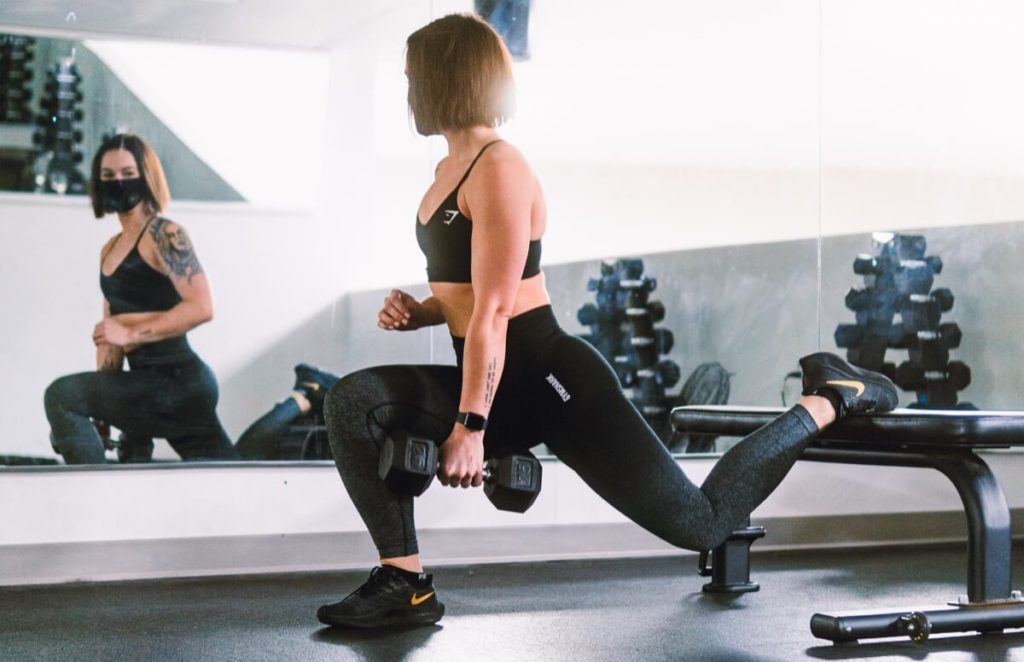

How to:
- Stand tall with your feet shoulder-width apart and arms at your sides. Have a sturdy elevated object behind you: a gym bench, plyo box, or chair.
- Bring your right leg behind your body and elevate the foot on your chosen platform.
- Retract your shoulder blades, engage your abs, and inhale.
- Descend into a squat by bending your front knee. Move down until your front thigh is almost parallel to the floor. Your knee should be over your ankle or slightly behind.
- Pause at the bottom for a moment and press through your front heel to extend your knee.
- Exhale near the top.
- Take another breath and descend again.
- Do as many slow and controlled repetitions as possible, switch leg positions, and do the same number of reps for your right side.
Pro tip:
Play around with your stance length to find what works best for you. You might have to start with a shorter stride to get better at maintaining your balance.
Gradually increase the distance between your feet as you get used to the exercise to shift the emphasis on your posterior chain.







Hevy – Workout Tracker







Hevy – Workout Tracker
Create and log your lower glute exercises with Hevy, and track your progress
9. Romanian Deadlift (Barbell, Dumbbell)
Romanian deadlifts (RDLs) are one of the best hamstring exercises but are also excellent for the glutes (9). Specifically, performing the movement develops the area where your glutes and hamstrings meet, leading to a more pronounced crease.
One excellent benefit of RDLs is the range of motion. Leaning your torso forward causes a pronounced stretch in your posterior chain, and standing up leads to a great contraction.
Plus, unlike some of the exercises on our list, RDLs allow for excellent loading. You can start with a lightweight to get used to the movement and gradually work up to a pair of heavy dumbbells or a loaded barbell.
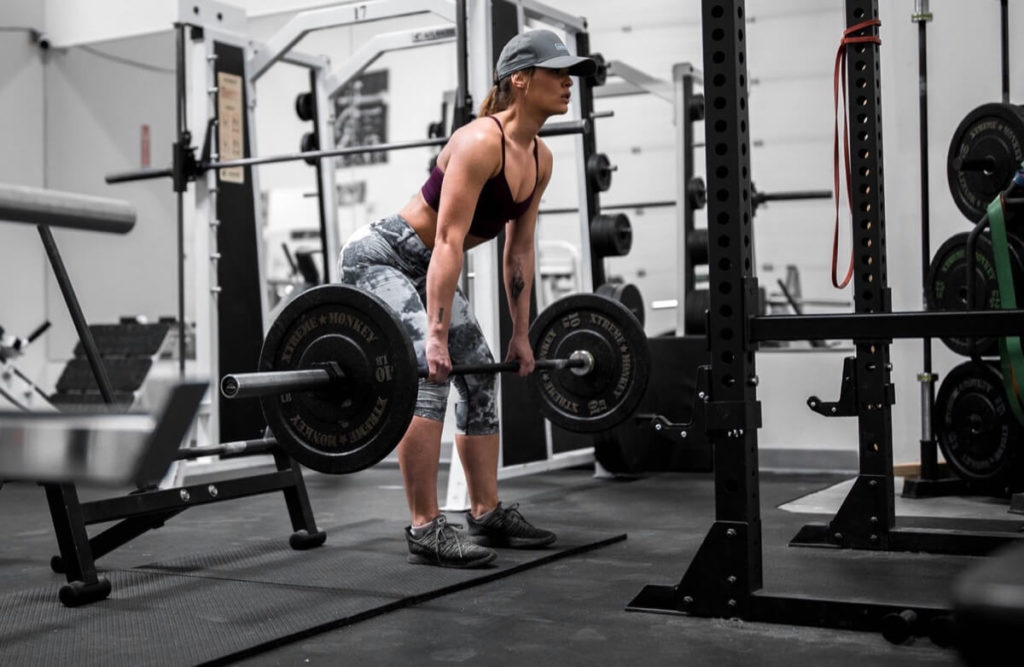

How to (barbell):
- Set the barbell at knee height.
- Stand in front of the bar with your shins a couple of inches away.
- Lean forward, grab the bar with a double overhand grip (palms facing your body), retract your shoulder blades, and take a deep breath.
- Press through your heels and drive your hips forward to lift the bar. Alternatively, deadlift the barbell from the floor using a stiff-leg technique.
- Take a few steps back and position your feet hip-width apart with your toes pointing slightly out.
- Keep your shoulders retracted and bend your knees slightly.
- Take another deep breath and push your buttocks back as you lean your torso forward. Your back should be straight, and you should feel a stretch in your posterior muscles.
- Descend as low as your flexibility allows and straighten your body by driving your hips forward. Then, squeeze your glutes at the top and exhale.
- Take another breath and repeat.
Pro tip:
According to some sources, keeping your big toes planted firmly on the ground can lead to better glute activation, making for a good lower glute workout.
10. Single Leg Glute Bridge
The glute bridge is similar to hip thrusts, apart from one difference: you must lie flat on the floor instead of placing your upper back against an elevated object (e.g., a flat bench).
Beginners can experience growth from classic glute bridges, but the exercise becomes too easy after a while. One good way to keep overloading your body and make progress is by performing the single-leg version.
In addition to being more challenging, training one side at a time is an effective way to evenly develop both sides of your body, leading to better symmetry.
How to:
- Place an exercise mat on the floor and lie on your back.
- Bend your knees and have your feet flat on the ground. Keep your arms straight and to your sides for balance.
- Take a deep breath and engage your abs.
- Raise your right foot off the ground and straighten the knee.
- Press through your left heel and drive your hips toward the ceiling. Your left knee, hips, and shoulders should be in a straight line at the top.
- Pause briefly and slowly lower your buttocks to the floor as you exhale.
- Inhale again and repeat.
- Once finished, switch feet position and do the same number of reps for your right side.
Pro tip:
Avoid overextending your hips at the top position, as that can create an excessive arch in your lower back and lead to stress.
Keep your repetitions controlled and abs engaged to maintain a strong and healthy lower back position.
11. Glute Bridge Hamstring Curl
Glute bridge hamstring curls are a more advanced exercise that leads to excellent glute activation. More importantly, the movement targets the area where the hamstrings meet the buttocks muscles, leading to a pronounced crease.
In addition, the lower glute exercise develops the gluteus medius and minimus, which provide pelvic stability.
How to:
- Place an exercise mat on the floor and lie on your back.
- Bend your knees and plant your feet flat on the floor. The floor should be slick enough to slide your heels back and forth. Consider removing your shoes or placing slider discs underneath your heels to reduce friction.
- Once you’ve assumed the starting position, tense your upper body by engaging your abs and squeezing your glutes.
- Push through your heels and drive your hips toward the ceiling. Your shoulders, hips, and knees should be straight, with your lower back neutral.
- Take another deep breath and slowly drive your heels away from your body, extending your knees.
- Drive your heels forward as much as possible and pause for a moment. You should primarily feel the tension in your glute muscles.
- Slowly bring your heels in as you bend your knees by contracting your hamstrings.
- Exhale.
- Take another breath and repeat.
Pro tip:
The glute bridge and curl is an advanced exercise that often exposes weak glutes and abs. It is best to start with a short range of motion and gradually extend your knees more as you develop strength and body awareness.
For example, you can begin by simply holding the top position for a moment. Then, start driving your heels a couple of inches away before returning to the starting position.
Related Article: Best Home Workout for Women: 7 Fantastic Options
12. Jumping Lunge
The jumping lunge is a dynamic lower-body exercise that builds lean muscle and develops your power and athleticism.
Like Bulgarian split squats, lunges emphasize one side at a time, leading to superior leg and glute activation. You also develop both sides more evenly, reducing the risk of muscle or strength imbalances.
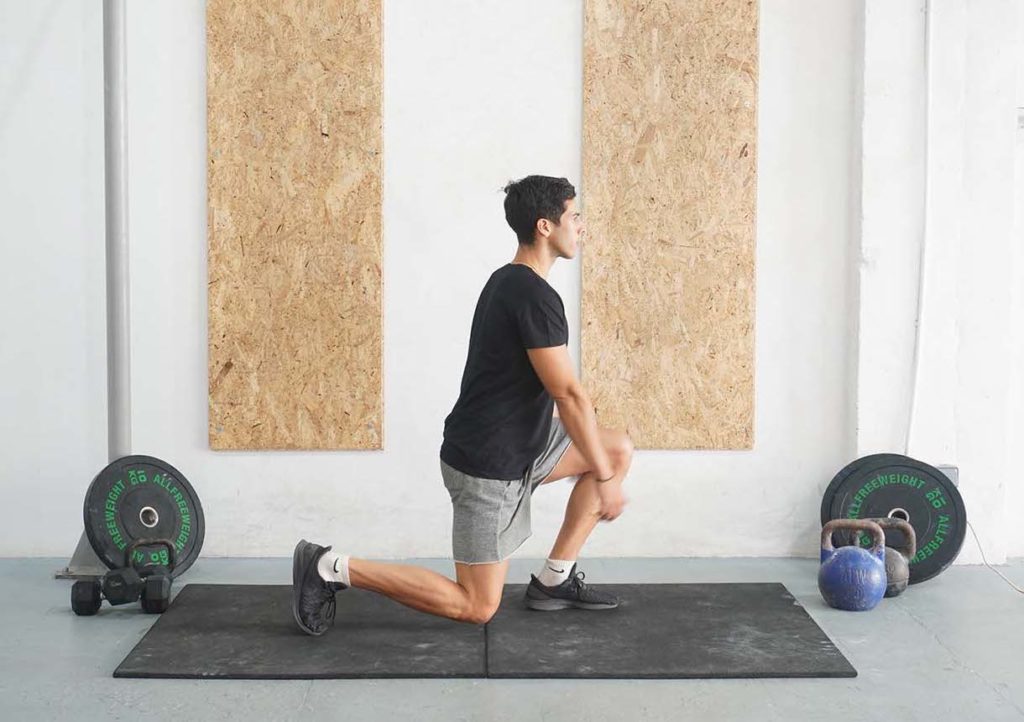

How to:
- Stand tall with your shoulders back and feet hip-width apart.
- Place your hands on your hips, take a deep breath, and engage your abs.
- Hop in the air and simultaneously bring your right leg forward and the left one back.
- Plant your right foot flat on the ground and position the ball of your left one on the floor.
- Immediately descend into a lunge and exhale. Your right knee should be directly over your foot at the bottom position.
- Inhale quickly and drive through your front heel, propelling yourself in the air.
- Immediately switch legs, landing your left foot in the front position and descending into another lunge.
- Keep alternate jumping until you’re done.
Pro tip:
For additional stability, swing your arms in sync with your legs, similar to how you would while running:
- Left foot forward = left arm back and right one forward
- Right foot forward = right arm back and left one forward
Frequently Asked Questions (FAQs)
1. Can I tone the underbutt area?
The only way to ‘tone’ the area is by developing the lower glutes and controlling your body fat percentage. Doing so would create a pronounced crease and improve the shape of your buttocks.
2. Can I isolate the lower glute region?
Unfortunately, it is impossible to truly isolate the lower glutes. Any exercise you do for the area will involve other muscles (e.g., the upper glutes and hamstrings) to some degree.
3. Does glute soreness mean growth?
Any glute training should result in at least some soreness in the area. While muscle soreness (DOMS) doesn’t necessarily mean you’re going to grow, not getting any soreness isn’t good.
It could indicate that your training isn’t challenging enough or that you fail to target the correct muscles.
Final Thoughts
The gluteal region is relatively straightforward, but optimal growth comes down to picking the right exercises and doing them consistently.
More importantly, progress depends on optimal muscle activation and progressive overload.







Hevy – Workout Tracker







Hevy – Workout Tracker
Create and log your lower glute exercises with Hevy, and track your progress
We hope our list of exercises gives you some ideas for your training. Check out the Hevy app if you’re looking for the ultimate tool to find more activities and organize and track your workouts.


